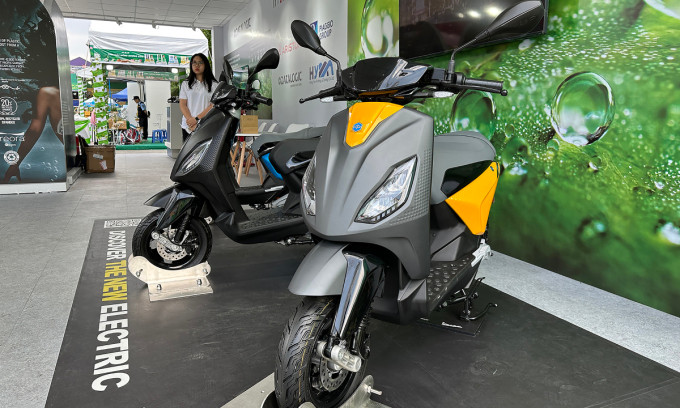How to accelerate, start, brake and recharge are habits that drivers must change when switching from gasoline to electric motorbikes.
How to get on the train
One of the most obvious differences between electric vehicles and gasoline vehicles is the ability to accelerate strongly, due to the instantaneous torque and maximum power. Drivers must be careful when applying the throttle, especially when starting from a standstill.
For common gasoline motorbikes with small engines and low power, the initial acceleration can be slower and easier to get used to, causing many people to turn the throttle hard when the motorbike stops to "start" decisively. When switching to an electric motorbike, if the throttle is turned hard in these situations, the driver may panic because the motorbike will jump up, causing loss of control.

(Illustration)
Therefore, the safest way for new electric vehicle users is to turn the throttle in short increments until they feel the vehicle has enough traction to move at the desired speed.
In addition, electric vehicles do not make noise when moving. This can cause other drivers to be startled when being overtaken. Therefore, make sure not to overtake the vehicles next to you.
How to brake
Most electric motorbikes have electronic brakes, equipped with switches and sensors so that the system will turn off the motor when the user activates the brake, even with the lightest pressure. This is a safety mechanism on electric vehicles to safely reduce the speed of the vehicle.
Deceleration while the motor is still running will reduce braking efficiency, resulting in longer braking distances and possible loss of vehicle control.
On a regular motorbike, the driver can hold the throttle and lightly apply the brake to slow the vehicle down as desired. On an electric motorbike, applying the brake to control speed is impossible, especially when going uphill.
Therefore, when braking on an electric motorbike, you need to reduce the throttle completely, avoid keeping the throttle still because when releasing the brake, the vehicle will rush forward. The driver can keep the throttle still when braking in the situation of going uphill, encountering an obstacle in front and gradually stopping the vehicle, to help the vehicle have enough traction to avoid sliding backwards.
Calculate charging time
The biggest advantage of electric motorbikes over gas-powered motorbikes is that they do not need to be filled with gas or oil, however, the time to fully charge the battery can be up to 4-10 hours, depending on the battery level of the vehicle or the battery technology of the manufacturer.
The ideal time to charge the vehicle is in the evening, before going to bed, this period lasts from 6-8 hours, which is enough to fully charge the battery of most electric motorbikes on the market. Charging overnight, even when the battery is full, will not be dangerous for the vehicle or battery.
TB (according to VnExpress)